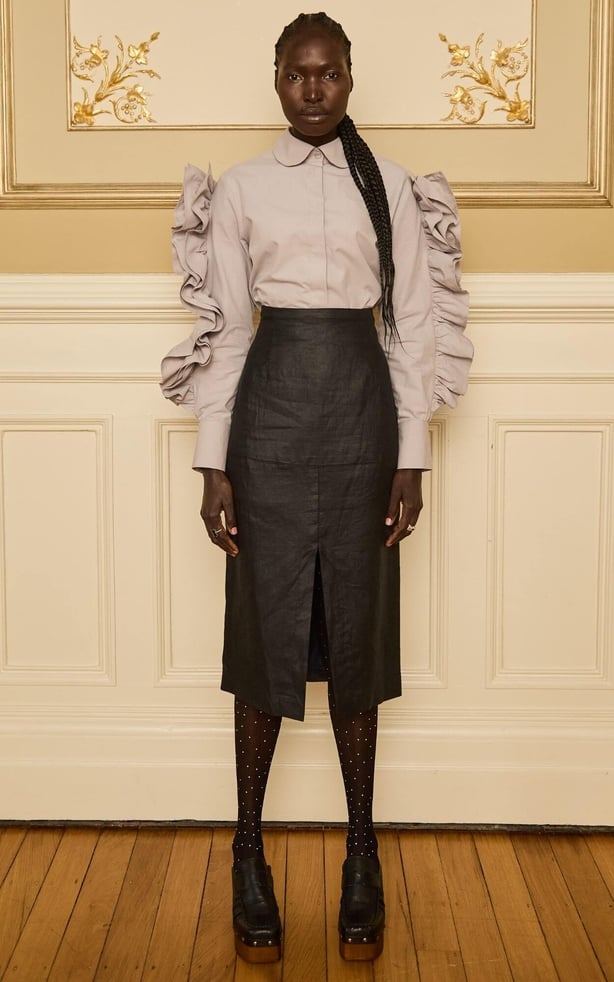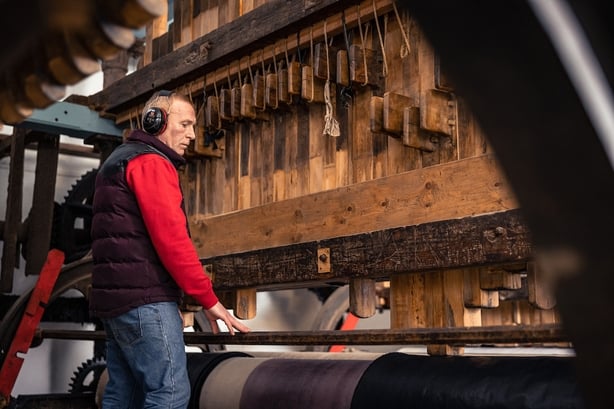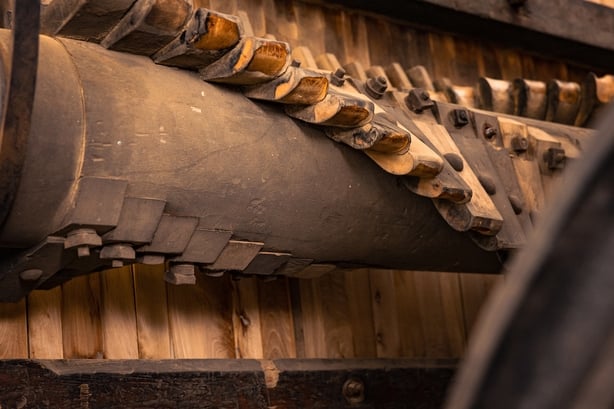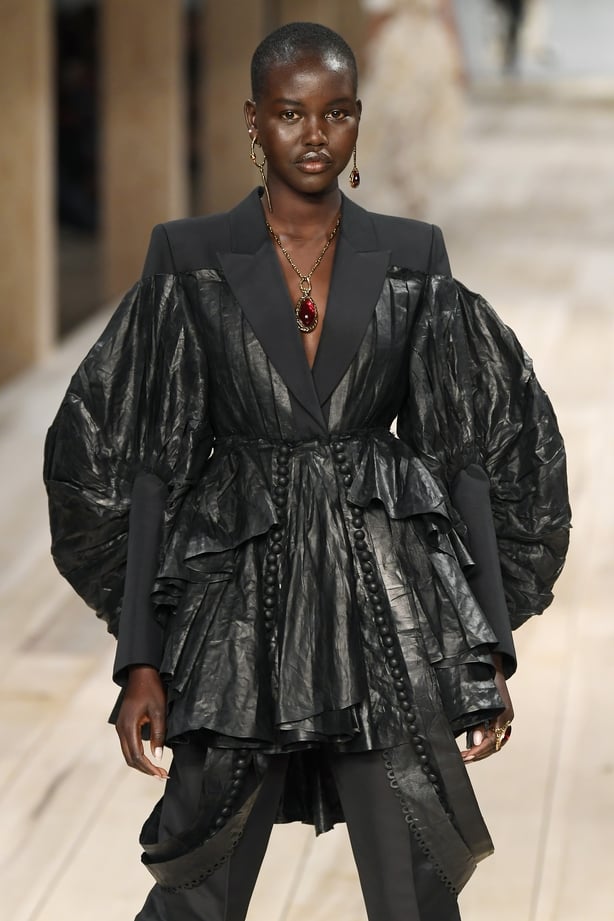A number of Irish designers are resurrecting dressmaking techniques that were almost lost to time, such as beetled linen, writes fashion historian Laura Fitzachary.
Some of us have memories of a family member teaching us to sew, having been dressmakers, weavers or working in fashion or the textile industry themselves – me included.
But what of the skills and techniques that have not been handed down, that are waiting in archives, attics and diaries to be rediscovered or given a new lease of life?
Heritage plays such a big role in the story of Irish fashion, and today, several Irish designers and craftspeople are working to keep traditions alive by incorporating them into contemporary design.

For Aoife Rooney, the mind behind the label AOIFE ®, generational skills and time-honoured practices have always been at the core of her work. In a conversation a number of weeks ago, she recalled how her mother was a fashion designer, lecturer and winner of designer awards in her heyday.
"She shared a class with Paul Costelloe's class at the Grafton Academy", Rooney told me. "She opened her boutique in Donnybrook before having her own family and giving up her passions to raise my siblings and me and to do the accounts for my father's construction and renovation business.
"My mother has been my stick and plaster throughout my fashion label AOIFE®; she often says you started where I left off."
The work on their label began in 2014, with a focus on sustainable materials, designing unique styles, pattern making, right through to the fruition of their Irish trademark label AOIFE® in 2016.
"We travelled throughout Ireland, Italy, the UK and France, attending all the trade shows to test and discover Europe's best fabrics and resources. When we made our trip around Ireland a few years before COVID, we started in Wexford with Emblem Weavers."
It was on a trip to the Emblem Weavers that Rooney curated fabric with the proprietor, Stephen - AOIFE ®'s S/S26 collection will feature Emblem linen fabric. It was also where she heard of William Clark, who practised beetling linen.

William Clark & Sons was founded in 1736 by Jackson Clark, who proposed that an area known now as Upperlands, not too far from Maghera, would be perfect for a waterwheel to drive a device called a beetling engine.
"In doing so, he revolutionised the finishing of linen fabric forever", Rooney said.
Linen fabric, with this machine, was given a lustrous sheen through approximately 140 hours of pounding the fabric with vertical wooden blocks.
The traditional process (wet beetling) involves submerging the linen cloth in potato starch before it’s pounded, the pressure then tightens the weave, creating an exceptionally flat fabric that develops a characteristic sheen as the linen dries out.
Unsurprisingly, it ended up in high demand with buyers seeking it in London, Dublin and the US. However, surprisingly, despite its appearance, beetled linen was typically reserved by tailors for reinforcing seams, relying on the strength that flax-based fabric provides.
The generations of textile masters that followed adapted their skills to natural and synthetic fibres, leading to booming trade well into the 19th century.
Sadly, this process saw a massive decline in the 1930s as cheaper materials such as rayon and polyester entered the market.

Yet, William Clark & Sons continued to become one of the world’s oldest companies, and the textile masters adapted again, producing exceptional fabric and developing innovations.
By the 2020s, a growing interest in Irish heritage in fashion also highlighted past processes and techniques. Linen beetling had caught the interest of Alexander McQueen, who featured the process in their S/S 2020 collection, designed by Sarah Burton.
Speaking about the collection, Burton highlighted how it was an attempt at preservation: "A lot of the fabric industry is endangered, so it was this idea of catching things before they disappear," she said.
To truly combat fast fashion, clothes need to last, and by learning from the past, innovative brands such as AOIFE® have done just that – combining an homage to Irish heritage with using regenerated, reclaimed and bio-based materials.

"We believe that in today's world, luxury is deeply connected to the humanity that goes into making a handcrafted garment", Rooney said. "Fast fashion is on the rise, with machines taking over human roles, yet we stand at a pivotal moment to preserve and celebrate the richness of our culture. This means supporting culture, tradition, and the legacy of quality materials like linen while supporting circular fashion and quality of life."
There are several museums across Ireland that are dedicated to our textile and dress history, such as the Mountmellick Embroidery Museum in Co. Laois and the Irish Linen Centre & Lisburn Museum in Northern Ireland.
Not only are they open to the public, but they also work closely with local groups to ensure that the skills of the past are not forgotten. They examine what the future holds for Irish lace and linen, not just their past.
Other sites to visit across Ireland and Northern Ireland include the Wellbrook Beetling Mill in Northern Ireland and the Ulster Canal Stores in Co Monaghan, both focusing on linen and lace, respectively.
Designers such as Róisín Pierce have cited the history of Irish women’s craft, such as Mountmellick embroidery and their white-on-white work echoing her own palette.
Knitwear designer Caroline Mitchell has also worked with Mountmellick lace, alongside lace specialist Dolores Dempsey, designing a project in 2018 that encouraged makers to learn and explore Irish lace and its production.
Finally, I must mention Olwen Burke, whose celebration and evolution of handcraft and traditional techniques reimagine vintage lace and textiles into contemporary silhouettes.
By reviving the past, Irish fashion certainly has just as rich a future.
The views expressed here are those of the author and do not represent or reflect the views of RTÉ.

